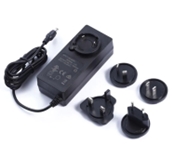Lithium-ion battery fires continue to be a concern for fire organisations across Australia and there have been a number of recent lithium-ion battery fires.
Lithium-ion battery fires continue to be a concern for fire organisations across Australia and there have been a number of recent lithium-ion battery fires.
Data on the Fire and Rescue NSW website shows that between January 2023 and November 2023 there have been more than 200 battery related fires and the ABC website (21 March 2024) reported that Fire and Rescue NSW has recorded more than 60 lithium-ion fires in the state so far in 2024.
To help reduce the risk of fire of battery powered appliances, make sure the battery charger supplied with the appliance has the correct safety testing and safety approvals.
Also make sure that the appliance is tested with the battery charger you intend to supply so that the two products work together correctly and safely.
Fire and Rescue NSW notes that Lithium-ion batteries are the fastest growing fire risk in NSW and has published information on its website on precautions that can be taken to reduce the risk of fire when using lithium-ion batteries.
What can I do to get assistance?
CBA can assist you with meeting your regulatory obligations and provide accredited safety certification.
If you would like to know more on how CBA can assist you with your regulatory requirements, please contact us on 61 2 9099-1557 or email Gunther at gtheisz@certificationbody.com.au or Colin at cpayne@certificationbody.com.au.













